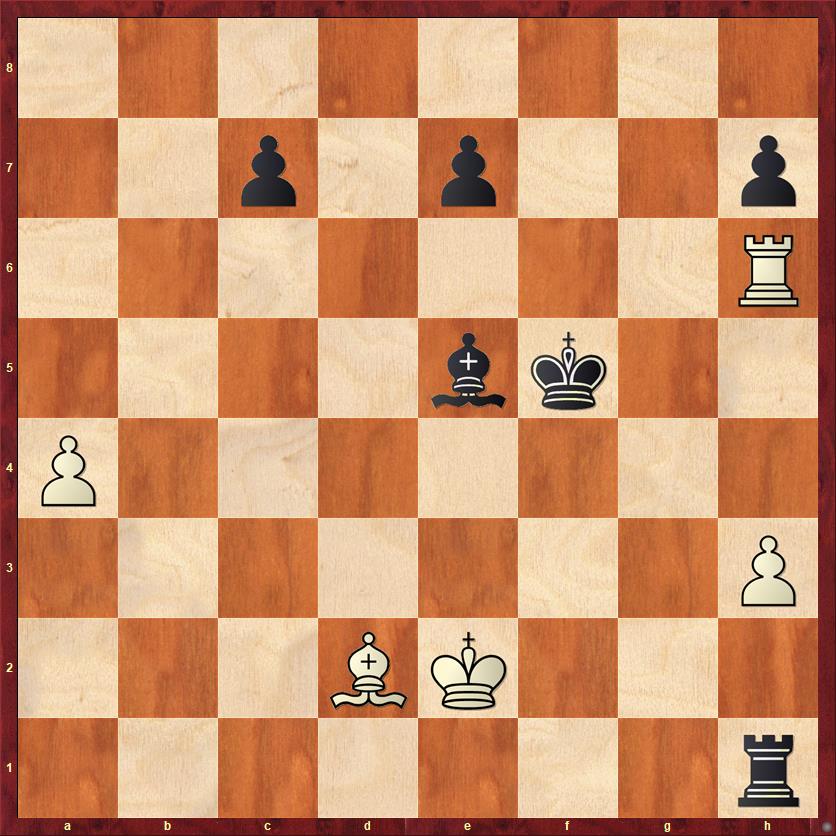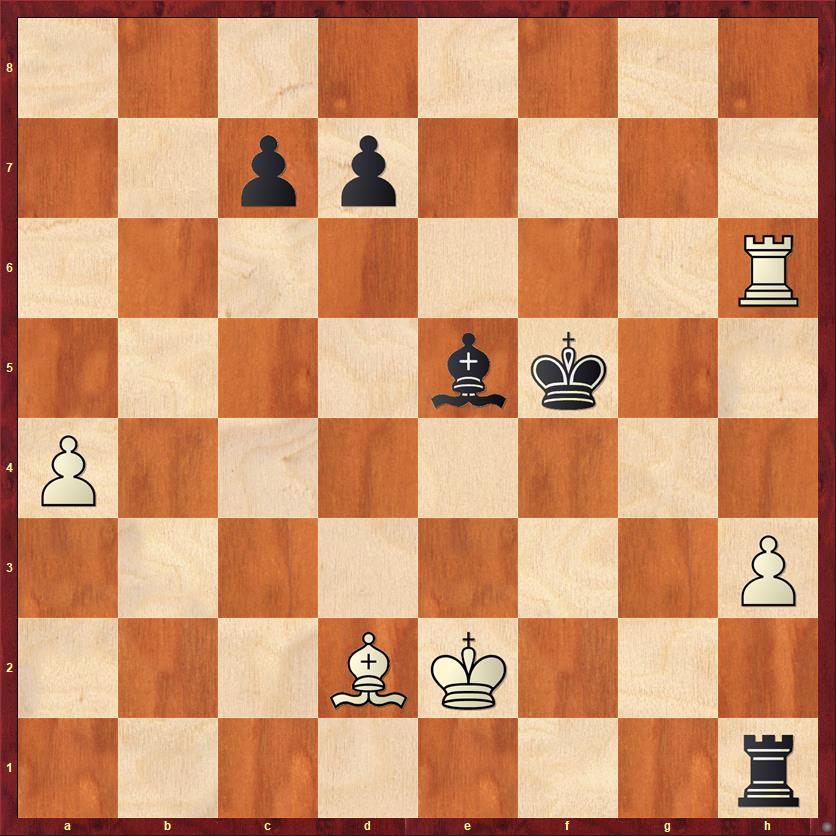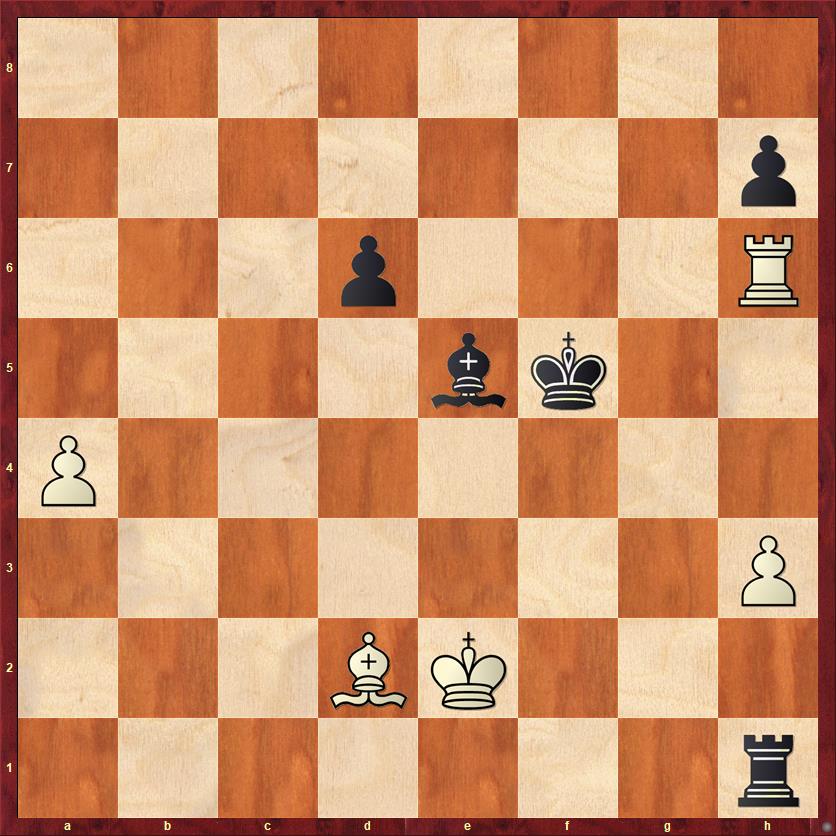Here’s a challenge of a kind I haven’t seen before. I’m going to show you three very similar positions. In the first, it’s Black to play and win. In the second, Black has to play exactly the same first two moves, and you have to show that the game is a draw. In the third, Black has to play exactly the same first two moves, and you have to show that he is lost!

FEN: 8/2p1p2p/7R/4bk2/P7/7P/3BK3/7r b – – 0 1
Position 1.

FEN: 8/2pp4/7R/4bk2/P7/7P/3BK3/7r b – – 0 1
Position 2.

FEN: 8/7p/3p3R/4bk2/P7/7P/3BK3/7r b – – 0 1
Position 3.
Are you ready? The solution is 1. … Rh2+ 2. K any (except e1) Rxd2! If 2. Ke1 Black has to interpolate 2. … Bg3+ 3. Kf1 or Kd1 Rxd2!
In the first position this pseudo-sacrifice wins for Black, but it’s a lot trickier than you might think at first. After 1. … Rh2+ 2. Kd3 Rxd2+ 3. Kxd2 Bf4+ 4. Kd3 Bxh6 Black has won a piece — but after 5. a5! it turns out that Black has no way to stop the a-pawn!
Nevertheless, Black still wins with 5. … c5! 6. a6 c4+! If 7. Kxc4 Black can play … Be3 and stop the a-pawn. So White has to play 7. Ke2, trying to keep the bishop out of e3. But Black’s pawn is unstoppable too! After 7. … c3 8. a7 c2 9. a8=Q c1=Q White can play a few spite checks but there is no perpetual, and with an extra piece and pawn Black is winning.
Now let me tell you the story behind this position. I got to the Position 1 in a game against the computer program Fritz, where Fritz was Black. It played exactly this way up to move 4 (1. … Rh2+ 2. Kd3 Rxd2+ 3. Kxd2 Bf4+ 4. Kd3 but then, stunningly, it didn’t take my rook. It played 4. … e5?? 5. Rxh7 and I won easily.
Actually, when we got to move 4 in the game I thought I was just winning, because I didn’t see how Black could stop the pawn. So I actually wasn’t so surprised at the time that it played 4. … e5?? But then when I went over the game afterwards with Fritz, I was amazed to see the brilliant winning line. I can only think that this was a case where it didn’t choose the best move because I had “dumbed it down” to 2025. In other words, I just got lucky.
However, I also started ruminating about what a knife edge there was between victory, draw, and defeat in this position. Suppose, for example, that after 6. … c4+ White simply took on c4 and then tried to win Black’s remaining pawns? That’s the situation in Position 2. After 6. … c4+ 7. Kxc4! Be3 8. Kd5! White draws, because Black has no way to defend the d-pawn. Also note that there is another drawing theme after 5. a5, where Black plays 5. … Bf8 (trying to get to c5) 6. Kc4 (keeping the bishop out of c5) Bh6 (trying to get to e3) 7. Kd3 (keeping it out of e3) Bf8 etc.
Finally, the next step is to create a position where Black doesn’t have his amazing resource of 6. … c4+. That leads us to Position 3, where after 1. … Rh2+? 2. Kd3 Rxd2+?? 3. Kxd2 Bf4+ 4. Kd3 Bxh6 5. a5! there is indeed no way for Black’s bishop to stop the a-pawn, and no way to deflect the king away from d3 as in Position 1. So Black loses. Of course, if Black plays some other first two moves besides … Rh2+ and … Rxd2+, he should be able to draw. But really, how many of us would be able to resist playing a combination that seemingly wins a piece?
I’m sure that a gifted composer would be able to come up with an even better version of this study, maybe one that combined all the themes in one position instead of three. But I kind of like the fact that the first position was a real position from a real game.
Also, I think it’s cool that such a simple position could illustrate so many themes. Let’s see: There’s removal of the guard (… Rxd2+), fork (… Bf4+), outside passed pawn (a5), pawn race, deflection (… c4+), domination (in Position 1, Black’s bishop dominates White’s king and prevents it from stopping the c-pawn; in Position 2 it’s kind of a standoff; in Position 3, White’s king dominates Black’s bishop and keeps it from stopping the a-pawn), insufficient mating material (in Position 2).



{ 1 comment… read it below or add one }
This study already exists…
H. Otten, 1892
W: Ke4, pp: a4, g4
B: Kf6, Bg7
White to play and win. 🙂